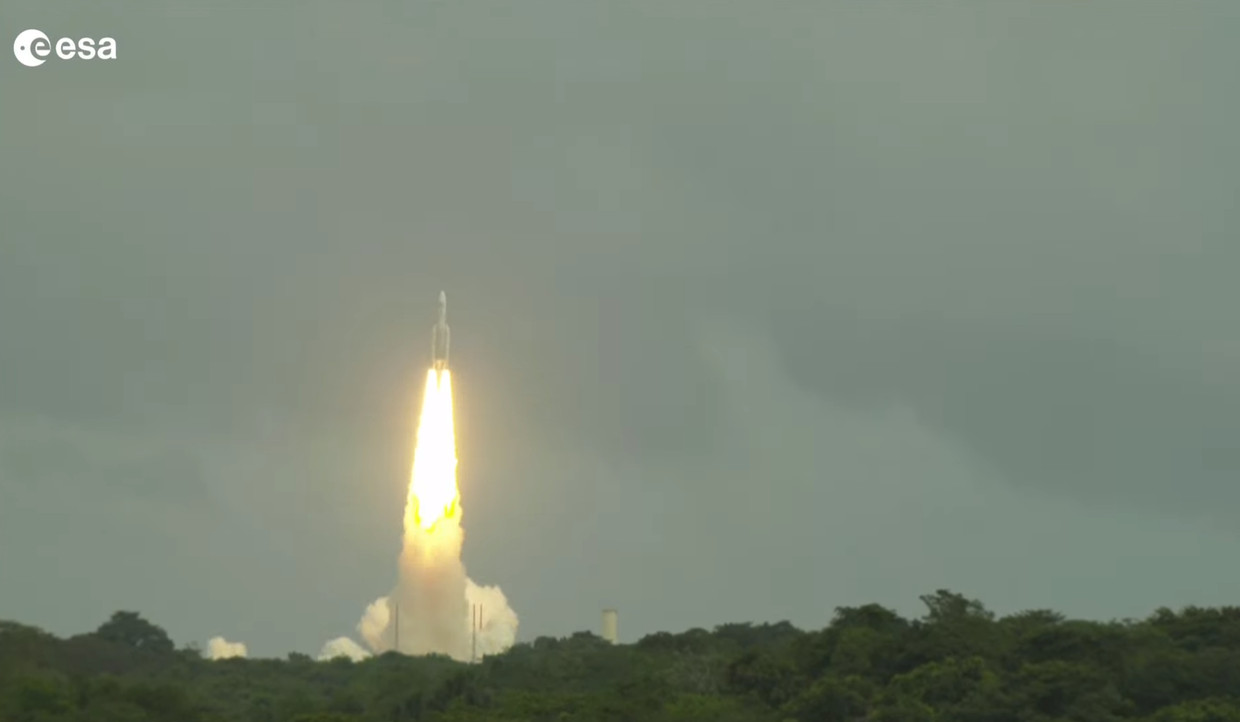
At 2:14 p.m. Dutch time, Juice blasted off to a soundtrack of roaring rocket engines from the green jungle around the European launch site of Kourou, French Guiana, into the blackness of space. Destination: the icy moons Europa, Callisto and Ganymede.
There are major scientific questions about these moons of gas giant Jupiter. For example, Europa with its oceans under the ice of our solar system is the most likely location for extraterrestrial life. Ganymede, in turn, is the largest moon, larger even than the planet Mercury. The celestial body has, among other things, a magnetic field, unique for a moon. The Jupiter Icy Moons Explorer, as the probe is called in full, should provide scientists with more information on these questions and more.
About the Author
George van Hal writes about astronomy, physics and space travel by Volkskrant. He has published books on everything from the universe to the smallest building blocks of reality.
The launch was actually scheduled for Thursday, but then the weather was too bad. Forecasts showed an increased likelihood of lightning strikes over the Kourou launch site. Mission control then decided to cancel the launch 10 minutes before the scheduled departure. However, the European Ariane 5 rocket was able to leave on Friday. This is the penultimate mission of the rocket, the current centerpiece of European space travel. After that, the successor to Ariane 6 must take over.
Unfold the solar panels
Launching Juice was a series of exciting moments. First the departure from Earth and then – half an hour later – the detachment of the last stage of the rocket and the delivery of Juice into space. It was only after this was achieved that a loud cheer rose in the Kourou control center. Around 3:30 p.m., the solar panels made in the Netherlands were unfolded, an essential step, because if that had failed, the probe would run out of energy.
The mission team will remain busy with the probe in the coming days. For example, the antennas still have to unfold, as does the rod of the so-called magnetometer, with which they want to study the magnetic field of Jupiter and Ganymede. The team will test the instruments until around mid-July.
The journey to Jupiter and its moons is long. The probe will not arrive until 2031, after a tour of the Earth and the Moon (in 2024), of Venus (2025), then of the Earth two more times (in 2026 and 2029). With all of these visits, Juice gets an extra boost due to the gravity of the celestial bodies in question.
After arriving, Juice will continue to research ice moons until at least September 2035. In the final phase of the mission, the probe will orbit Ganymede, the first time an artificial craft will enter orbit around a moon other than our own. At the end of the mission, Juice will collide with Ganymede with one final puff of thruster and crash into it.

“Food expert. Unapologetic bacon maven. Beer enthusiast. Pop cultureaholic. General travel scholar. Total internet buff.”
 DodoFinance Breaking News Made For You!
DodoFinance Breaking News Made For You!
